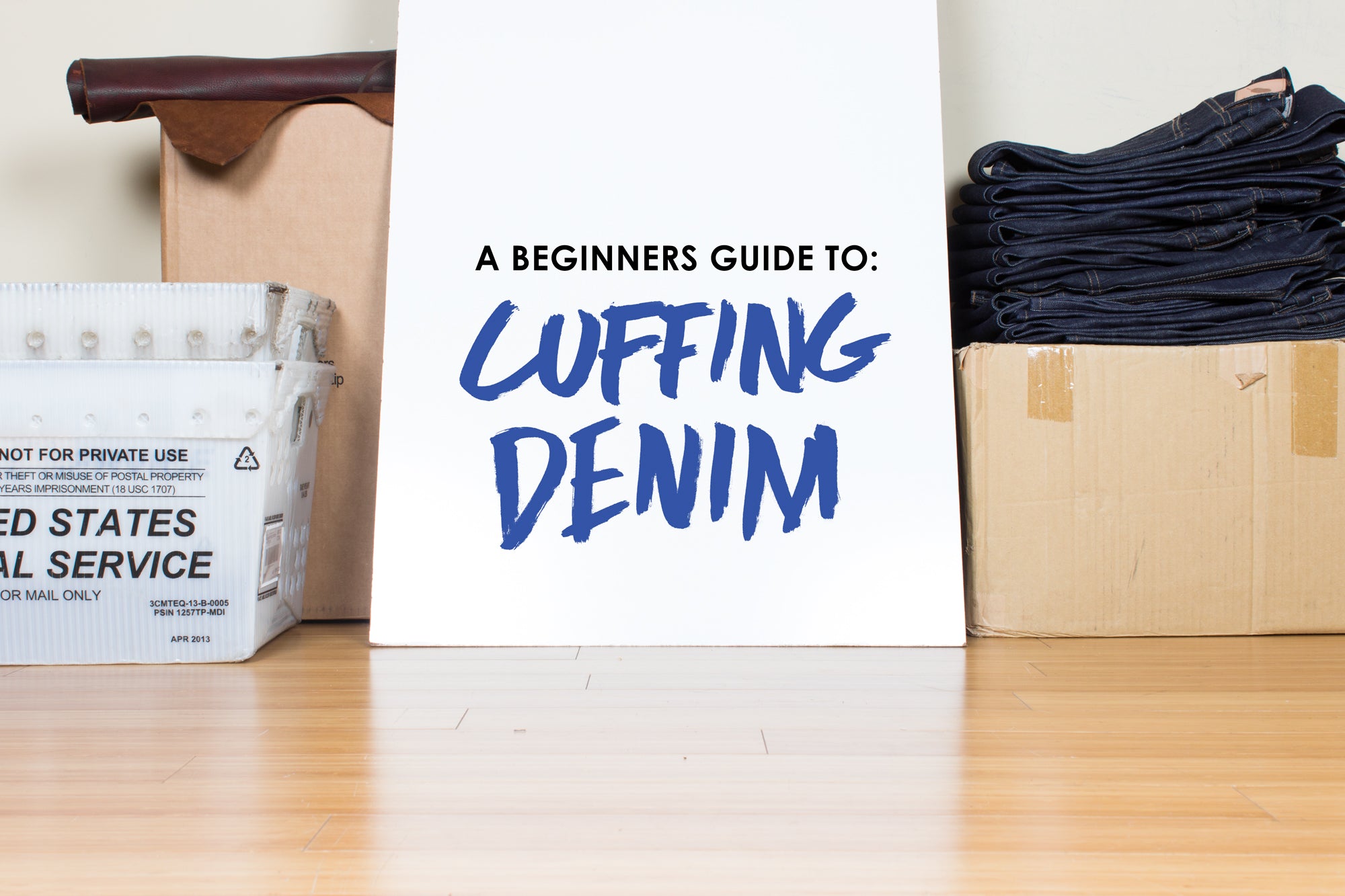
Well, you made it. You finally found yourself that pair of jeans that'll be your entry to the world of raw denim. Congratulations, and welcome to the club. Before you can start breaking in your newest purchase, you have another important decision to make: "How do you plan on wearing these?" That's the question we ask every customer who enters our shop prior to hemming their pair of jeans, and the one you'll need to ask yourself upon buying your next pair. With the bevy of denim styles, shoe styles, and overall aesthetics seen on the streets and the internet today, it can be overwhelming trying to decide exactly how you want your jeans to look, which is why we've created this handy guide (with pictures!) to help guide you in the direction of what style is right for you.

The Single Cuff
This straight-forward method can be achieved by flipping the leg opening of your jeans outward in your desired amount. This is a great way of providing some separation between your footwear and jeans, and shows off both the weft and hemline, which can provide some color or contrast, depending on the denim. The single cuff works great in a number of different settings and styles, but works particularly well with smaller boots and shoes, and for a more business casual look. We recommend allowing an additional 1-2" of length when hemming for this look.
This straight-forward method can be achieved by flipping the leg opening of your jeans outward in your desired amount. This is a great way of providing some separation between your footwear and jeans, and shows off both the weft and hemline, which can provide some color or contrast, depending on the denim. The single cuff works great in a number of different settings and styles, but works particularly well with smaller boots and shoes, and for a more business casual look. We recommend allowing an additional 1-2" of length when hemming for this look.

The Double Cuff
Perhaps the most popularized method of the 5, the double cuff takes the aforementioned single cuff, and rolls it over again, creating a stronger, thicker cuff that hides the hemline. The stronger, more rugged look of this cuff is often matched with boots and larger shoes, and can be performed on fabrics of all kinds. This is an exceptional way of showing off the weft of your jeans, particularly so if you own a fabric with a dyed or unique weft. The versatility of this look makes it the standard by which most raw denim enthusiasts wear their jeans. Because of the nature of this method, we recommend allowing an additional 2-3" when hemming in order to reach your natural inseam length upon cuffing your jeans.

Flat Inseam (Sans Cuff)
The flat inseam involves hemming jeans to your appropriate natural inseam length, as to let the leg opening of the jeans lay "flat" atop your preferred footwear. This style can be done so that the leg runs straight, all the way down to the leg opening (without creases), or can be hemmed with what is often called a "break," otherwise known as a small amount of excess fabric used to create creases near the leg opening. Breaks are often used to provide security in the event that the inseam shrinks after a wash, or once creases behind the knee develop. A good summer alternative to these options is to have the jeans hemmed 1-2" higher than normal, creating a higher hem that helps show off your socks and provide extra breeze to your ankles and legs. We recommend the flat inseam for more formal or business casual looks.

"Stacking"
Popularized in street culture and typically seen in streetwear catalogs, "stacking" refers to the bunching of excess fabric on your jeans near the lower portion of your legs. Stacking can be achieved by keeping an extra-long inseam length, relative to what your natural inseam length would be. How much is entirely up to you, but the more length you give yourself, the larger the "stacks" will be. While stacking can technically be done on any denim that is long in length, the true aesthetic of "stacking" isn't typically achieved unless the leg openings of the jeans are significantly slim. The slim leg opening helps balance out the proportions of the creases in the lower leg, and provides some added texture to a new pair of jeans. The stacked look is often reserved for darker (typically black), and medium to heavyweight denim (in order for the stacks to stay in place), but can be applied to fabrics of all types.

The "Pin-Roll"
Born in the 1980s and since adopted by the sneaker-community, the "pin-roll" is perhaps the most unique method of cuffing your jeans on this list. Used as a way to highlight your sneakers, and keep indigo off expensive shoes, the pin-roll is performed by folding the inseam over horizontally, prior to being folded over vertically (video here). This synches the leg opening into a much tighter positioning, preventing the denim from falling down and touching your shoes. In order to perform this method accurately, you'll need a slightly longer inseam length and a slightly larger leg opening. Too small of a leg opening and you won't have enough fabric to fold over, too large and the taper will look noticeably drastic. For this reason, we recommend a moderate sized leg opening and an extra 2-3" of length.
